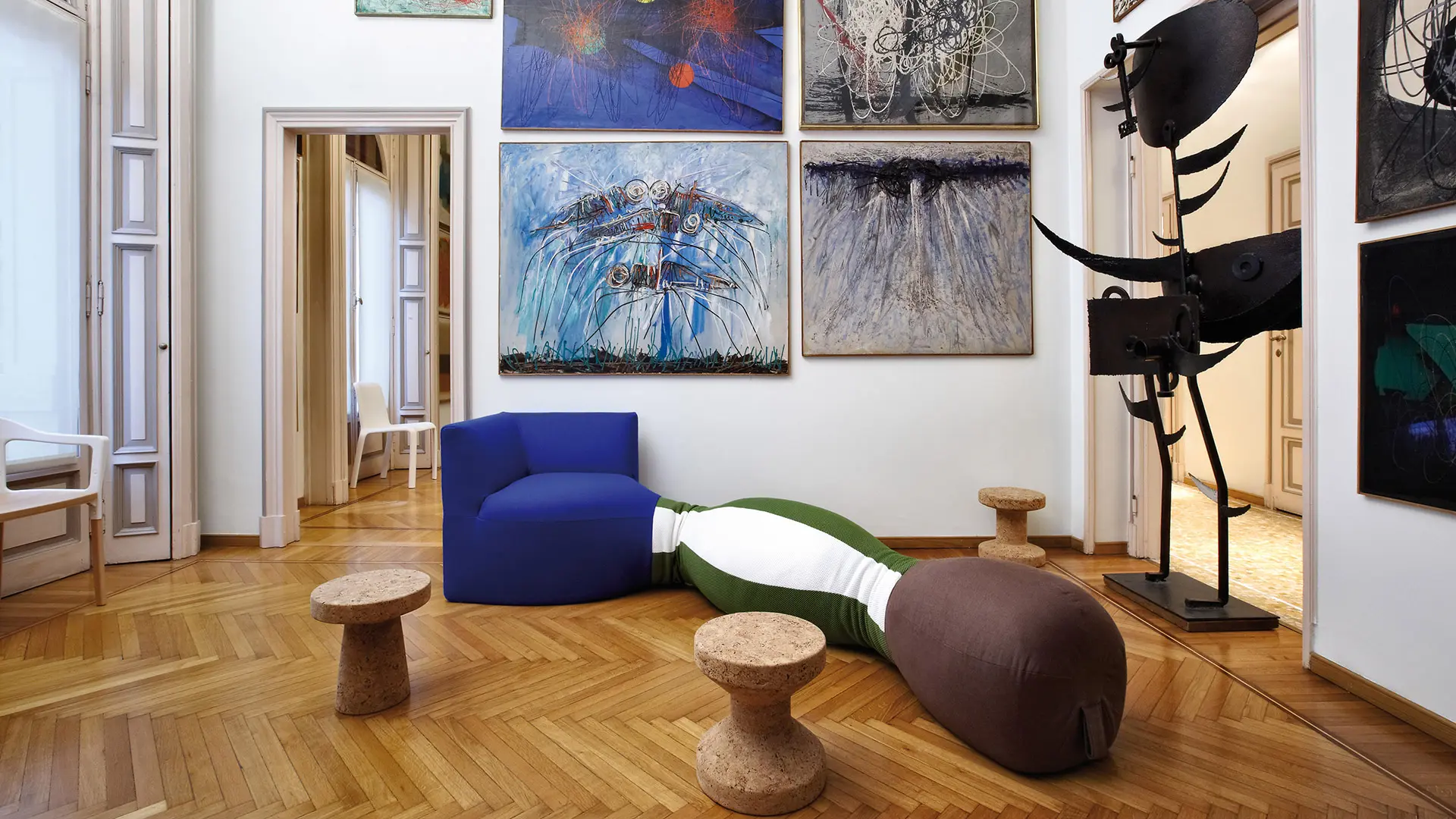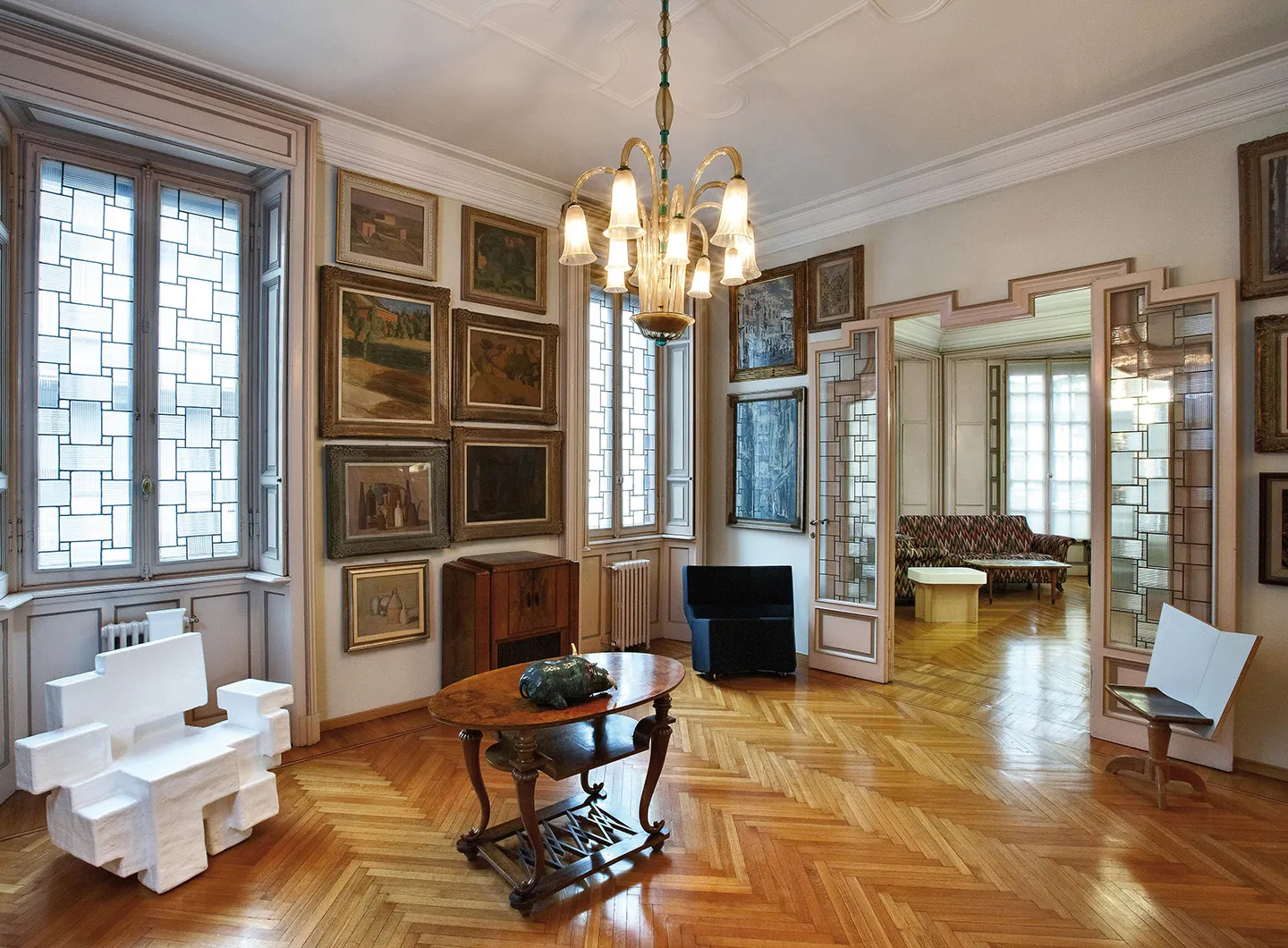From Japan to Norway, by way of India and the United States
Il Salone / la Città (The Salone / The City). An exhibition of exhibitions

Ospiti inaspettati. Case di ieri, Design di oggi, 2010, Casa Museo Boschi Di Stefano. Photo By Pasquale Formisano
Chiming with “supersalone,” an exhibition devoted to the wealth of cultural events held in the city by the Salone del Mobile. At Triennale Milano, from 4th to 12th September. An interview with Marco Sammicheli and Mario Piazza.
It’s a special moment. Highlighted by the “supersalone” event shortly to be held at the Rho
Fairgrounds with Triennale as its city hub. It will serve to underscore, this year too, the indissoluble bond between design and Milan, the trade fair and its extraordinary container. Together over the last 60 years they have fed the design debate with a multiplicity of public events now being given a critical rereading by the Italian Design Museum at Triennale Milano exhibition for the Salone del Mobile.Milano, one of the many unmissable appointments in the packed Design Week calendar. il Salone / la Città features more than half a century of cultural events promoted by the Salone del Mobile, which have the merit of communicating design to aficionados and consumers alike, marking major periods in the evolution of Italian and international design thinking. It is a packed and precious exhibition, unveiled at a preview by Marco Sammicheli, Director of the Italian Design Museum at Triennale Milano, and Mario Piazza, curator of the event.
MS: The exhibition il Salone / la Città celebrates the manner in which this commercial event has been expressed over a 60-year period in different ways and forms. The Salone has held cultural events on the sidelines of the main trade fair since 1961, many of which have been held at Triennale: the exhibition on Italian furniture to mark the 20th anniversary of the Salone, for exam-ple, and also Stanze. Altre Filosofie dell’Abitare/Rooms. Novel Living Concepts in 2016, and the edi-tion of the Triennale Design Museum devoted to entrepreneurs, La Fabbrica dei Sogni/The Dream Factory, in 2011.

Stanze Gianluca di Ioia, Photography by Triennale

Stanze Gianluca di Ioia, Photography by Triennale
MP: The exhibition is subtitled La Storia di 60 Anni di Eventi Collaterali nella Città di Milano (The Story of 60 Years of Collateral Events in the City of Milan) – which perfectly expresses the way in which, as well as being a business institution, the Salone has also been a cultural force within the city. The focus of the exhibition is the story of the events that have been held alongside the trade fair since the early Sixties, which, while generated in an atmosphere of enthusiasm, when reread in their entirety, express a rationale that has its own profundity. And density. This means that the “collateral effects” of these events have reaped benefits both in terms of reflection on some of the issues involved with the merchandising world – represented by the Salone del Mobile itself – and in terms of carving out a new and different relationship with the city of Milan. These events outwith the trade fair complex represented an alternative to the traditional way of producing cultural events, opening the way for original knowledge-building forums thanks to the many and varied points of view of different speakers – not just historians, design experts and great designers, but also art and drama critics, and thanks to the public.
MS: These consisted of communication campaigns, monumental installations, theatre performances and shows that involved huge audiences, not just professionals, and their story often overlapped with that of Triennale. That’s why, along with Claudio Feltrin, Stefano Boeri, Maria Porro and Marco Sabetta, we decided that Triennale should be the city hub of the Salone, hosting an exhibition that would celebrate this major anniversary. Mario Piazza has scoured the archives for evidence of the institution’s participation, either as a venue or a lender of furnishings, furniture or accessories that belong in the Museum of Italian Design collection, with the utmost respect for what had been achieved. The upshot is a powerfully impactful theatrical setting, against which a packed series of themes and experiences play out in the curve of the first floor of the Palazzo dell’Arte.
MP: The exhibition layout was built on a critical reading of the many exhibitions that were held regularly from the Sixties onwards. The themes were interpreted and brought together to form a poetic mise-en-scene with a synedochal logic. The aim is to encourage visitors to carry out a visual and oblique reading, without the need for a chronological exhibition of events promoted by the Salone. It’s not a historic exhibition in the classic sense. For example, it begins with the concept of the archive, a record of what has happened. The archive is rendering the memory of these years visible, but there are two symbolic pieces of furniture in the centre, separated by a large double mirror: a chest of drawers by the School of Giuseppe Maggiolini, one of the first Salone exhibitions, and another chest of drawers from the late Twenties by Gio Ponti. It is the beginning of a story, a subtle, reflective threshold between the great Italian craftsman and the awareness that in-dustry is built on savoir faire.
MP: There are nine sections. The first is devoted to critical reflection on the changing languages of furniture, underscoring the two factors that led to the setting up of the trade fair. On one hand the existence of an established Italian industrial body and on the other the desire to capture and affirm an Italian identity through furniture design, the meaning of design and the critical spirit of the designer. A major exhibition, Mobili Italiani 1961/1991. Le Varie Età dei Linguaggi (Italian Furniture 1961/1991. Languages through the Various Ages) illustrated this theme very clearly, going back over the unrest that marked the first 30 years of the Salone, an intense period that spanned the economic boom and the limits on public consumerism. Another section is devoted to the great masters, a series of one man shows that demonstrate the ideational wealth of Italian and international design through a number of figures such as Ponti, Sottsass, Magistretti and Aalto, with no rhetorical intent or pretension to exhaustiveness. The theme of Italian identity, or genius loci and Made in Italy, draws on the exhibition held to mark the 40th anniversary of the Salone Internazionale del Mobile in 2001, in which design and fashion, symbols of Italian style and much more besides, were intertwined for the first time. Here a beehive contains original images from the documentary archives of the Salone and materials from the Design Museum.
Another powerful theme relates to the philosophies of home living, tackled by various exhibitions and media more closely associated with a historical and critical spirit or the pursuit of research and experimentation, theatre and dance for example, or the theme of food and its rituals, which has natural repercussions on the commercial rationale of the Salone. An unusual Last Supper will engage the public and facilitate their interpretation of this section. Then there’s the theme of ecolo-gy, or rather the constraints to production, represented by awnings carrying images of some of the installations and one of communication: advertising, the posters have been condensed into one sin-gle scenic object.
MS: It has completely changed. Originally what the Salone wanted to do was to communicate a commercial event, i.e. the opportunity to visit a fair that sold furniture; subsequently it began to communicate the objects, so the people – businesspeople and designers, who had become famous in the meantime – and the lifestyles and experiences that design transmitted. Until relatively recently, when communication picked up on contemporary cultural themes, the new demands and urgencies of the social agenda. This exhibition highlights the way in which communication has always addressed an international audience and how the design industry has managed to draw in graphic artists, photographers, and designers, whose part in the creative chain it recognised; artists, famous authors for the city installations and theatrical performances, world famous art directors …
MP: such as Massimo Vignelli, who carved out the Salone’s first corporate identity and produced the graphics for some of the exhibitions, to whom we wanted to pay tribute in the section devoted to the masters. The communication methods certainly reflect the spirit of the times. Over the years the Salone has opened up to different reflections, on the relationship between industry and design-er, for instance: more than 20 years of SaloneSatellite are proof of that. Looking to the
present, the general public seems more inclined towards the performative dimension, entertainment and the approach mechanism to things is mediated by the technologies - extremely effective but also standardised.
MS: The city has never been just a background to exhibitions for the Salone, but a fabric on which to hold the events that – albeit temporary – have established a tradition. The title Mario chose for the exhibition underscores the overlap and the closeness between the two entities. An event and a context that feed off each other, to such an extent that over time the city has increasingly regis-tered the presence of design throughout the year on a daily basis.
MP: That’s because each of these events is Milan. Starting with the Triennale, a container that embodies the way cities are lived. Increasingly it’s fair to say that the city is the Salone every day. You only need to look at how the cultural policy of the municipality has been inspired by the Salone and Fuorisalone over the years.
MS: Which makes the sharing and internationalisation of this particular week a model that the city could adopt on other occasions.
MP: A black and white photograph that I’ve placed in the section devoted to the genius loci and Made in Italy. It portrays a spherical silvered vase with holes for individual flowers designed by BBPR in 1940 (signed by Banfi, Peressutti and Belgiojoso but not by Rogers, who had already had to flee from Italy) and produced for the seventh Triennale. I was struck by the idea, the original shape for the times. Not just that – a while ago I designed a very similar object, a marble vase like a bowling ball and with a number of holes for individual flowers. A coincidence, a surprise, but perhaps everything goes round.
il Salone / la Città
La storia di 60 anni di eventi collaterali nella città
4 – 12 settembre 2021
Triennale Milan (viale Alemagna 6)
Curated by Mario Piazza
Free entry
MILAN TRIENNALE OPENING HOURS
4th September: 11.00am - 7.00pm (last admission at 6.00pm)
5 - 12 September: 11.00 - 22.00 (last admission at 21.00)
As required by government provisions, to access the Milano Triennale it is necessary to show the Green Pass or equivalent certificates and an identity document.





















